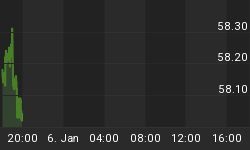1/10/2011 9:15:40 AM
The Financial sector helped the major indexes finish lower on the day as bank liabilities once again increase based on a decision reached by a high court...
Recommendation:
Take no action.
Daily Trend Indications:

- Positions indicated as Green are Long positions and those indicated as Red are short positions.
- The State of the Market is used to determine how you should trade. A trending market can ignore support and resistance levels and maintain its direction longer than most traders think it will.
- The BIAS is used to determine how aggressive or defensive you should be with a position. If the BIAS is Bullish but the market is in a Trading state, you might enter a short trade to take advantage of a reversal off of resistance. The BIAS tells you to exit that trade on "weaker" signals than you might otherwise trade on as the market is predisposed to move in the direction of BIAS.
- At Risk is generally neutral represented by "-". When it is "Bullish" or "Bearish" it warns of a potential change in the BIAS.
- The Moving Averages are noted as they are important signposts used by the Chartists community in determining the relative health of the markets.
Current ETF positions are:
In cash.
Daily Trading Action
The major index ETFs opened higher then, after an initial spike, moved lower for the first half hour of trading then higher for the next half hour. From that point, it was a precipitous fall until around 1:00pm when V-shaped bottom was put in and the major indexes marched higher through the afternoon to close with only modest losses after being down more than one percent intraday. The Russell-2000 (IWM 78.52 -0.45) lost more than a half of one percent. The Semiconductor Index (SOX 425.76 +0.99) was the lone equity index we regularly monitor that closed higher. The Bank Index (KBE 26.23 -0.25) fell one percent while the Regional Bank Index (KRE 25.77 -0.77) fell three percent. The 20+ Yr Bonds (TLT 92.35 +0.49) gain one half of one percent. With the exception of the S&P-500, all indexes we regularly monitor are now in trading states. The S&P-500 remains in an uptrend state. NYSE volume lightened a bit but was still close to average with 1.085B shares traded. NASDAQ volume was still above average with 1.964B shares traded, declining modestly from Thursday's volume.
There were six economic reports of interest released:
- Non-farm Payrolls (Dec) came in at 103K versus an expected 150K
- Non-farm Private Payrolls (Dec) came in at 113K versus an expected 162K
- Unemployment Rate (Dec) came in at 9.4% versus an expected 9.7%
- Hourly Earnings (Dec) rose 0.1% as expected
- Average Work Week (Dec) came in at 34.3 hours as expected
- Consumer Credit (Nov) fell to +$1.3B versus an expected -$2.5B
The first five reports were released an hour before the open. The final report was released an hour before the close. Clearly the economic reports in total were below expectations. The market was still ready to rally until the Massachusetts Supreme Court handed down a ruling against Wells Fargo and U.S. Bancorp. With ownership of loans at specific times being unclear, banks aren't allowed to foreclose but since Wells and US Bancorp did so, they are liable. This is expected to have broad ramifications on U.S. banks and is one more concern for financial markets to worry about.
The U.S. dollar rose three tenths of one percent breaking to a new higher. This effectively breaks the downtrend in place since November 30th.
Energy (+0.7%), Utilities (+0.4%), and Industrials (+0.2%) were the only economic sectors in the S&P-500 to move higher. Consumer Discretionary was unchanged while the other six sectors moved lower led by Financials (-0.9%).
Implied volatility for the S&P-500 (VIX 17.14 -0.26) fell more than one percent while the implied volatility for the NASDAQ-100 (VXN 18.72 +0.31) rose most of two percent.
The yield for the 10-year note fell nine basis points to close at 3.33. The price of the near term futures contract for a barrel of crude oil fell thirty-five cents to close at $88.03.
Market internals were negative with decliners leading advancers 5:4 on the NYSE and by 5:3 on the NASDAQ. Down volume led up volume 3:2 on both the NYSE and the NASDAQ. The index put/call ratio rose 0.57 to close at 1.86. The equity put/call ratio rose 0.02 to close at 0.50.
Commentary:
Friday saw a huge recovery from an intraday dip that made its way down toward but never reached the 20-Day Moving Averages (DMAs) of the major indexes. The Russell-2000, however, settled on its 20-DMA even after battling its way higher through the afternoon.
The key external worry for market participants, as we enter into the beginning of earnings season this week, is what will happen with European bond auctions. Spain and Italy have bond auctions scheduled with significant interest rates required to take on the risk of buying sovereign debt from these countries. The Euro is again threatened which would cause the dollar to continue to lift against it which would apply negative pressure to U.S. equities.
We are looking for one more attempt to move the markets higher after a lower open on Monday. If we get the right set-up, we will finally enter the short positions we have been eyeing for quite some time now.
We hope you have enjoyed this edition of the McMillan portfolio. You may send comments to mark@stockbarometer.com.















